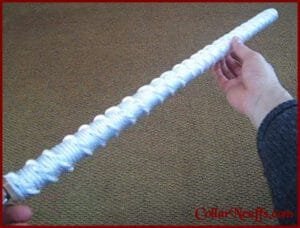Rope Ball Gag

how to make a rope ball gag for Femdom BDSM play. Ball gags are another common accessory in the BDSM toolkit. They come in different sizes and materials, and their primary function is to restrict speech, adding an element of helplessness to the experience. This can heighten sensations and deepen trust between partners. However, it’s essential to use them responsibly, ensuring that the gag fits comfortably and doesn’t pose any risk to the submissive’s safety.













